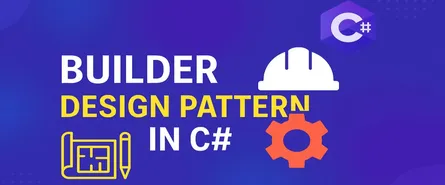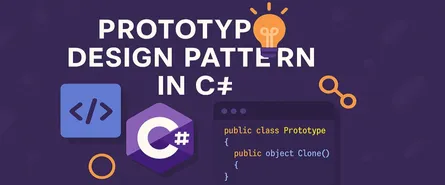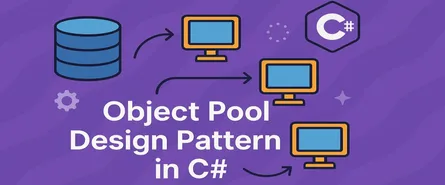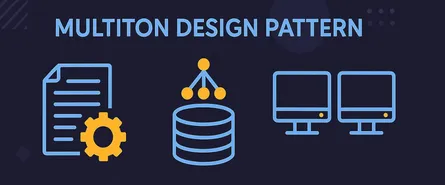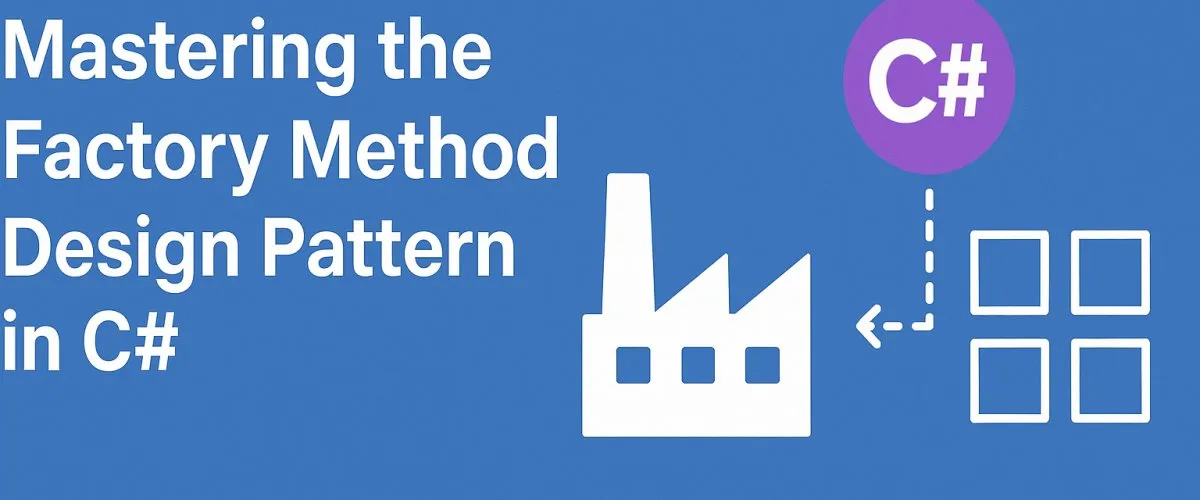
Mastering the Factory Method Pattern in C#
- Sudhir mangla
- Design Patterns
- 23 Mar, 2025
Hey there, architect! Ever felt like your code is starting to resemble a spaghetti bowl? 🍝 Ever been stuck modifying a system, desperately wishing you had the flexibility to swap out components without ripping everything apart? Well, you’re not alone! Good news, though—there’s a superhero-level design pattern to rescue you: the Factory Method.
Let’s dive head-first into what it is, why it’s awesome, and how you—yes, you—can wield its powers in your .NET applications. Buckle up; it’s going to be an epic ride!
🚩 What Exactly Is the Factory Method Design Pattern?
Imagine ordering a pizza 🍕. You pick the toppings, size, and crust, but do you really care about how the pizza is baked, or who exactly puts it in the oven? Nah! You just know it comes out delicious every time. That’s what the Factory Method Pattern is like for your code—it creates objects without exposing the instantiation logic, making your software flexible, reusable, and easy to manage.
Official definition alert:
“The Factory Method pattern defines an interface for creating an object, but lets subclasses decide which class to instantiate. It lets a class defer instantiation to subclasses.”
But let’s simplify this further:
- You have a Creator: This is like the pizza store that declares the factory method.
- You have Products: These are the pizzas—different types, each created by subclasses of the Creator.
- You have Concrete Creators: These are specific pizza stores (like “New York Style” or “Chicago Style”) responsible for creating the concrete pizzas (products).
🧑🏫 Core Principles of the Factory Method Pattern
Here are a few design principles behind the Factory Method:
- Encapsulate object creation: Hide the nitty-gritty details of how objects are created from the rest of the system.
- Open/Closed Principle (OCP): Classes should be open for extension but closed for modification. Factory Method lets you add new types of products without changing existing code.
- Single Responsibility Principle (SRP): Each class should have only one reason to change. Factories take care of creating objects, nothing more.
Simple enough, right? Now, let’s see exactly when you might want to call upon this superhero.
🕑 When Should You Use Factory Method?
Think about using the Factory Method when:
- You’re unsure about the exact types of objects your code needs until runtime.
- Your application should support multiple object families.
- You want to enforce consistency across object creation and usage.
- You aim to write code that’s easy to extend in the future—without modifying existing classes.
Still not sure? Ask yourself: Will adding or changing a new type break existing classes? If yes, then it’s definitely Factory Method time!
🔧 Key Components of Factory Method Pattern
Here are the four key components you’ll find in every Factory Method implementation:
| Component | Description | Example |
|---|---|---|
| Creator | Declares the Factory Method | PizzaStore |
| Concrete Creator | Implements the Factory Method to create concrete objects | NYStylePizzaStore |
| Product | Defines the interface for objects the factory creates | Pizza |
| Concrete Product | Implements the Product interface | CheesePizza |
🖥️ Detailed Implementation with C# Example
Let’s get practical! Time to code a real-life pizza factory in C#:
Step 1: Define your abstract product (Pizza)
public abstract class Pizza
{
public string Name { get; protected set; }
public void Prepare()
{
Console.WriteLine($"Preparing {Name}");
}
public void Bake()
{
Console.WriteLine($"Baking {Name}");
}
public void Cut()
{
Console.WriteLine($"Cutting {Name}");
}
public void Box()
{
Console.WriteLine($"Boxing {Name}");
}
}Step 2: Concrete Products
public class NYCheesePizza : Pizza
{
public NYCheesePizza()
{
Name = "NY Style Cheese Pizza";
}
}
public class ChicagoCheesePizza : Pizza
{
public ChicagoCheesePizza()
{
Name = "Chicago Style Deep Dish Cheese Pizza";
}
}Step 3: Creator class (Pizza Store)
public abstract class PizzaStore
{
public Pizza OrderPizza(string type)
{
Pizza pizza = CreatePizza(type);
pizza.Prepare();
pizza.Bake();
pizza.Cut();
pizza.Box();
return pizza;
}
protected abstract Pizza CreatePizza(string type);
}Step 4: Complete Concrete Creators (NY and Chicago Pizza Stores)
Here’s a complete example, expanding the New York and Chicago pizza stores with additional pizza types for extra clarity:
Concrete Products (Expanded):
// Additional Pizza Types
public class NYVeggiePizza : Pizza
{
public NYVeggiePizza()
{
Name = "NY Style Veggie Pizza";
}
}
public class ChicagoVeggiePizza : Pizza
{
public ChicagoVeggiePizza()
{
Name = "Chicago Style Deep Dish Veggie Pizza";
}
}Concrete Creator: NYPizzaStore (Fully Implemented):
public class NYPizzaStore : PizzaStore
{
protected override Pizza CreatePizza(string type)
{
switch(type.ToLower())
{
case "cheese":
return new NYCheesePizza();
case "veggie":
return new NYVeggiePizza();
default:
throw new ArgumentException("Sorry, pizza type not available in NY store.");
}
}
}Concrete Creator: ChicagoPizzaStore (Fully Implemented):
public class ChicagoPizzaStore : PizzaStore
{
protected override Pizza CreatePizza(string type)
{
switch(type.ToLower())
{
case "cheese":
return new ChicagoCheesePizza();
case "veggie":
return new ChicagoVeggiePizza();
default:
throw new ArgumentException("Sorry, pizza type not available in Chicago store.");
}
}
}Step 5: Client Usage (How to Order Pizza)
Now, here’s how you might use this Factory Method Pattern in real code—just like ordering from a pizza shop:
class Program
{
static void Main(string[] args)
{
// Let's order pizza from New York Store
PizzaStore nyStore = new NYPizzaStore();
Pizza nyCheesePizza = nyStore.OrderPizza("cheese");
Console.WriteLine($"I got a delicious {nyCheesePizza.Name}\n");
Pizza nyVeggiePizza = nyStore.OrderPizza("veggie");
Console.WriteLine($"I got a tasty {nyVeggiePizza.Name}\n");
// Now let's try Chicago Store
PizzaStore chicagoStore = new ChicagoPizzaStore();
Pizza chicagoCheesePizza = chicagoStore.OrderPizza("cheese");
Console.WriteLine($"I got a mouthwatering {chicagoCheesePizza.Name}\n");
Pizza chicagoVeggiePizza = chicagoStore.OrderPizza("veggie");
Console.WriteLine($"I got a delightful {chicagoVeggiePizza.Name}\n");
}
}When you run this, you’ll see something delightful like this:
Preparing NY Style Cheese Pizza
Baking NY Style Cheese Pizza
Cutting NY Style Cheese Pizza
Boxing NY Style Cheese Pizza
I got a delicious NY Style Cheese Pizza
Preparing NY Style Veggie Pizza
Baking NY Style Veggie Pizza
Cutting NY Style Veggie Pizza
Boxing NY Style Veggie Pizza
I got a tasty NY Style Veggie Pizza
Preparing Chicago Style Deep Dish Cheese Pizza
Baking Chicago Style Deep Dish Cheese Pizza
Cutting Chicago Style Deep Dish Cheese Pizza
Boxing Chicago Style Deep Dish Cheese Pizza
I got a mouthwatering Chicago Style Deep Dish Cheese Pizza
Preparing Chicago Style Deep Dish Veggie Pizza
Baking Chicago Style Deep Dish Veggie Pizza
Cutting Chicago Style Deep Dish Veggie Pizza
Boxing Chicago Style Deep Dish Veggie Pizza
I got a delightful Chicago Style Deep Dish Veggie PizzaNow that’s the Factory Method Pattern in action—clean, powerful, and flexible!
⚙️ Different Ways to Implement Factory Method
The Factory Method Pattern can be implemented in several ways in C#:
- Abstract Factory Method (like above):
- Uses inheritance and abstract methods.
- Virtual Method Factory:
- A default method implementation in base class with an option to override in subclasses.
- Parameterized Factory Method:
- Passes parameters at runtime to determine the product class.
Quick Example of Virtual Factory Method:
public class SimplePizzaStore
{
public virtual Pizza CreatePizza(string type)
{
if (type == "cheese") return new NYCheesePizza();
throw new ArgumentException("Pizza type unavailable");
}
}You might override this later as:
public class SpecialPizzaStore : SimplePizzaStore
{
public override Pizza CreatePizza(string type)
{
if (type == "veggie") return new NYVeggiePizza();
return base.CreatePizza(type);
}
}This approach simplifies implementation if complex inheritance isn’t needed.
🎯 Real-world Use Cases of Factory Method
- UI Components: Creating buttons or dialogs for different operating systems (Windows, macOS).
- Logging Frameworks: Instantiating loggers based on configuration (ConsoleLogger, FileLogger).
- Payment Gateways: Selecting gateways dynamically (Stripe, PayPal, RazorPay) based on user preferences or geography.
- Game Development: Creating enemies or game assets depending on level or difficulty.
✅ Advantages of Factory Method Pattern
- Flexibility: Easy to add new products without changing existing code.
- Maintainability: Centralizes creation logic, reducing code duplication.
- Testability: Facilitates mocking objects in unit tests.
- Single Responsibility: Clearly separates object creation from object usage.
⚠️ Disadvantages of Factory Method Pattern
- Complexity Increase: Overkill for small, simple scenarios.
- Many Subclasses: Can lead to an explosion of subclasses if there are many products.
- Code Navigation Difficulty: Abstracted creation logic can sometimes complicate debugging.
🏁 Conclusion: Why Use Factory Method?
Factory Method is your friendly neighborhood pattern—it solves the common software design problem of creating objects without tying your code to specific classes. It encapsulates the creation logic, helping you write code that’s modular, extensible, and easy to maintain.
So next time your code smells like spaghetti 🍝, remember the pizza store analogy and use Factory Method to cook up a cleaner, tastier solution. It might just become your favorite recipe in software architecture!

